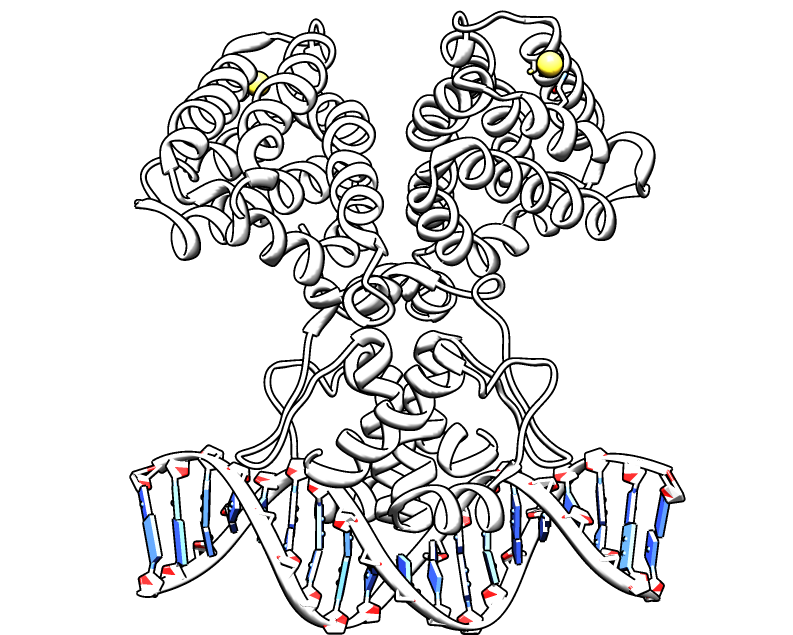Team:NTU-Taida/PEPDEX
From 2012.igem.org
(→Overall project) |
(→Overall project) |
||
| Line 2: | Line 2: | ||
{{:Team:NTU-Taida/Templates/BSHero|Title=Project|Content=<p>Testing Hero</p>}} | {{:Team:NTU-Taida/Templates/BSHero|Title=Project|Content=<p>Testing Hero</p>}} | ||
== '''Overall project''' == | == '''Overall project''' == | ||
| - | + | ||
In our project, we aim to utilize a microbe that respond to conditions in human body as an approach to administer smart peptide-based therapies. GLP-1, a human innate neuro-peptide for energy balance, is chosen to combat for obesity and metabolic syndrome. We engineered the non-pathogenic E. coli which senses fatty acids in intestines and secrets synthetic GLP-1. Appropriate signal peptide and penetratin are used to facilitate peptide secretion and intestinal uptake. Furthermore, we design a circuit with quorum sensing and double repressors, which aims to generate quick but sustainable responses and serves as an anti-noise filter. Plasmid stabilization modules including partition system and multimer resolution system are also incorporated to circumvent the undesirable loss or segregational instability of our artificial device. With this general concept of delivery of short peptide into human body, we can also target other pieces of human disease with alternative circuit designs. | In our project, we aim to utilize a microbe that respond to conditions in human body as an approach to administer smart peptide-based therapies. GLP-1, a human innate neuro-peptide for energy balance, is chosen to combat for obesity and metabolic syndrome. We engineered the non-pathogenic E. coli which senses fatty acids in intestines and secrets synthetic GLP-1. Appropriate signal peptide and penetratin are used to facilitate peptide secretion and intestinal uptake. Furthermore, we design a circuit with quorum sensing and double repressors, which aims to generate quick but sustainable responses and serves as an anti-noise filter. Plasmid stabilization modules including partition system and multimer resolution system are also incorporated to circumvent the undesirable loss or segregational instability of our artificial device. With this general concept of delivery of short peptide into human body, we can also target other pieces of human disease with alternative circuit designs. | ||
Revision as of 11:04, 6 September 2012
Project
Testing Hero
Contents |
Overall project
In our project, we aim to utilize a microbe that respond to conditions in human body as an approach to administer smart peptide-based therapies. GLP-1, a human innate neuro-peptide for energy balance, is chosen to combat for obesity and metabolic syndrome. We engineered the non-pathogenic E. coli which senses fatty acids in intestines and secrets synthetic GLP-1. Appropriate signal peptide and penetratin are used to facilitate peptide secretion and intestinal uptake. Furthermore, we design a circuit with quorum sensing and double repressors, which aims to generate quick but sustainable responses and serves as an anti-noise filter. Plasmid stabilization modules including partition system and multimer resolution system are also incorporated to circumvent the undesirable loss or segregational instability of our artificial device. With this general concept of delivery of short peptide into human body, we can also target other pieces of human disease with alternative circuit designs.
Project Details
hormone therapy-body weight control
Background
| header 1 | header 2 | header 3 |
|---|---|---|
| row 1, cell 1 | row 1, cell 2 | row 1, cell 3 |
| row 2, cell 1 | row 2, cell 2 | row 2, cell 3 |
Design
CPP File:Https://www.dropbox.com/s/1lnt1d2uo401rz6/123.mov fadR
Modeling
Results
Extension
peptide2
Background
Design
Modeling
Results
Extension
delivery circuit
Background
Design
Modeling
Results
Extension
Stability of delivery system
Briefing
As our system will function outside the labrotory and human gut lack for antibiotic selection pressure, the vector stability is the critical point that determine whether our system is applicable or not. Inspired by natural plasmid & transposable gene element, we cope up with vector instability by incorporating partition system, Multimer resolution system and toxin antitoxin system these modules into our design.
Background
plasmid instability
- multimer resolution system
- A description list is perfect for defining terms.
- partition system
- A description list is perfect for defining terms.
- Post-segregation killing
- A description list is perfect for defining terms.
Design
multimer resolution system:Tn1000(gamma delta) resolution system




partition system:from pseudomonas putida KT2440
Post-segregation killing:srnBC toxin-antitoxin system
| HEAD | head |
|---|---|
| 1 | 2 |
| 3 | 4 |
| 5 | 6 |
reference
- 1.reference one
- 2.reference two
safety of delivery system
suicidal system:
Level 1 of column
Horizontal gene transfer resister!!!
Modeling
Results
| HEAD | head |
|---|---|
| 1 | 2 |
| 3 | 4 |
| 5 | 6 |
Extension
 "
"


